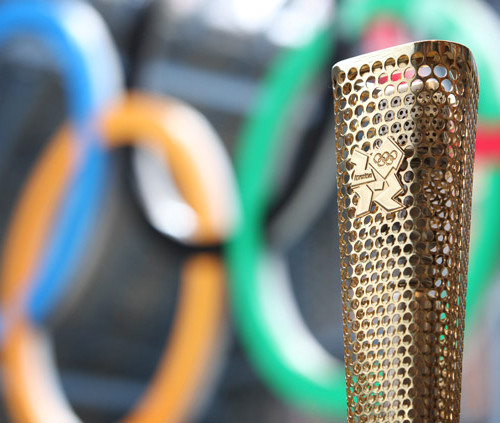The Olympics. It’s been an incredible showcase for sport and Great Britain so far, but has it been a showcase for the best mobile marketing? It’s certainly true that London and the Olympics offered marketers a dynamic vision to associate themselves with, while the millions visiting venues and events, plus the billions watching at home, virtually guaranteed audience reach. However, with mobile it can be difficult to generate engagement with the small screen, meaning strategy and execution is essential to grab an audience’s attention. Conversely it offers plenty of opportunities to uniquely bridge the physical and digital world – so that anything from billboards to sports venues, TV programmes and even inanimate objects with a barcode or logo can become experiential and conversational. The challenge for marketers was how best to structure and position mobile activity amidst the Olympic and Paralympic action.
Looking at the official organisation’s offering, the IOC’s approach was to update its mobile site with the latest news and information. Safe enough but fairly uninspiring. LOCOG took a more compelling route, launching well designed and useful apps, mobile sites, fan pages and games. The app and site designs were smart and the up-to-date and mostly practical content is useful, but there appears to be a missed opportunity – there’s no real user data collection, and the amount of games information offered inadvertently hides the overriding message being communicated, about getting involved in sport. Given LOCOG’s excellent work in running the games it’s a shame to criticise, though it’s probably safe to mention the lack of a mobile ticket sales offering and some general confusion when incorrectly naming Facebook check-in locations. Small issues though really, because LOCOG has grander aspirations for the Olympics, and ultimately needs to be judged on whether its mobile offerings form part of the sporting legacy it plans to create. Disappointing that there’s no data capture then, but in time its push notifications data may have a role to play. Theirs was a noble effort, for which we’ll award a bronze.
For the official sponsors, mobile efforts have varied. Samsung was an obvious sponsor to get the mobile component right, but in using a limited edition Olympics phone and a badly conceived AR application, plus sponsoring the official LOCOG apps, it’s difficult to imagine the brand won many new customers directly. Visa on the other hand offered users of Samsung phones an integrated contactless payment system using NFC throughout the Olympic Park; a demonstrable bit of innovative market positioning. A silver for Visa, then.
Meanwhile, P&G launched a few initiatives – the most heavily publicised being a campaign to thank mums for their hard work. But it didn’t seem to build an app or mobile site. Even tech-savvy sponsors like BMW and GE also appear not to have considered a strategic mobile offering. Instead, it’s over to Coca-Cola and EDF to show how mobile can combine with large scale events and promotions; Coca-Cola enabling users to watch and share app-created content at its Olympic Park Beat Box, and EDF by monitoring social networks to drive a light show on the London Eye. In both cases though the usability execution isn’t quite gold. Coca-Cola and EDF tie with Visa.
The remaining sponsors’ efforts included a fun team face-painting app from Panasonic and a live event listings app from BT London Live. If they’d have combined app features and uploaded face painted pictures to live TV screens it would have scored considerably better. Meanwhile, BP released an AR app that supports a different country’s team…
It seems most sponsors didn’t consider activity in locations outside the Olympic Park or around London, where audiences were almost as large.
With the Paralympics getting underway, there’s still hope that a last minute rush will see apps, sites and mobile campaigns updated and launched, making the most of the unprecedented huge crowds expected in Stratford in the next couple of weeks, alongside all the national and global attention the Paralympics will receive. Generally though, it seems there’s a lack of commitment afforded to mobile by the sponsors of these games which is a bit surprising, especially when considering its innovative nature, the scale of the Olympics and Paralympics opportunity and the published mobile traffic stats from the BBC and Google showing huge spikes in mobile usage so far. There has been considerable social media marketing activity from sponsors, but considerably less thought given to mobile and how it can get people talking, interacting and complementing the dynamism of the games.
Let’s see if a brand wins gold at the Paralympics.






